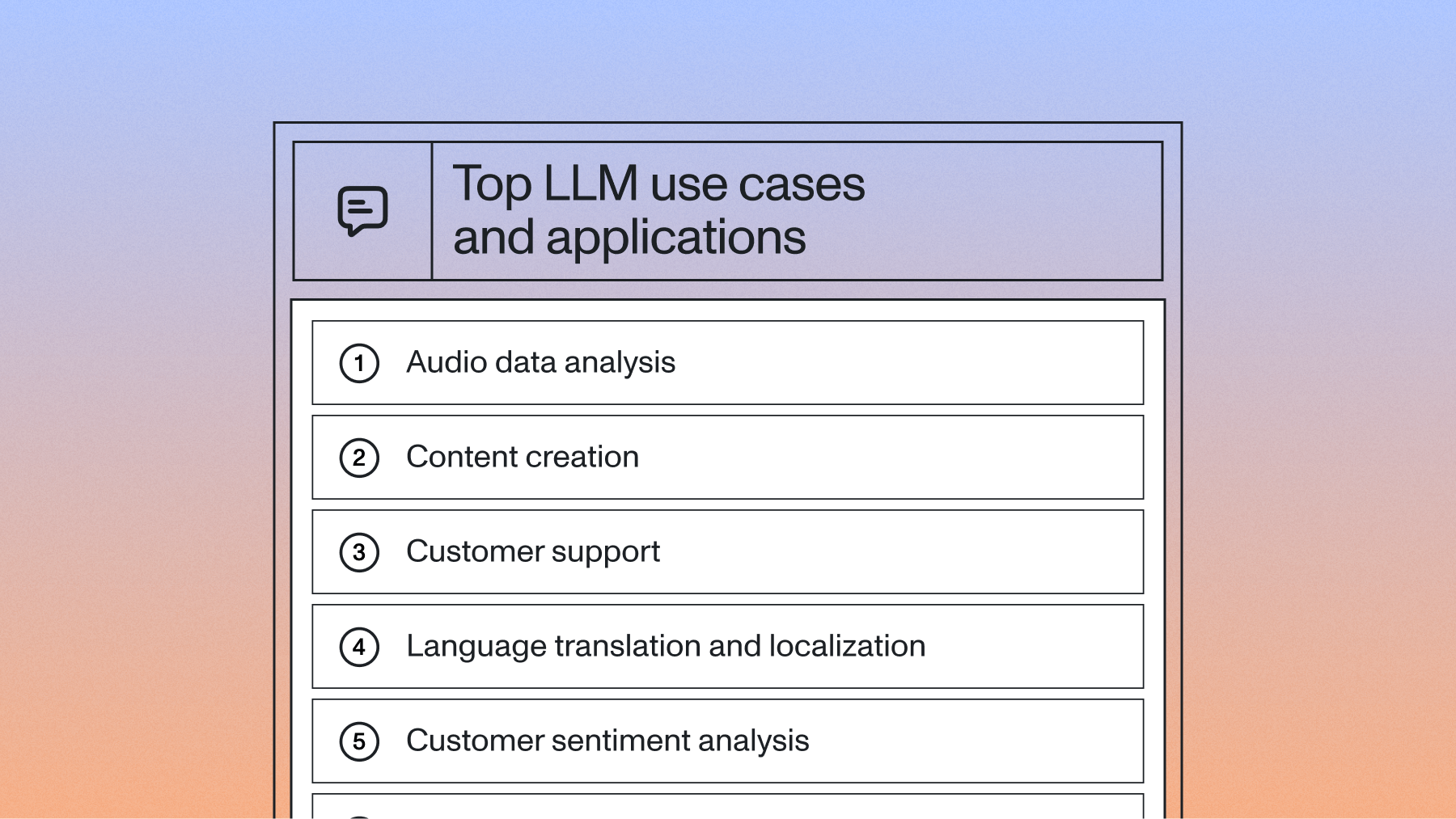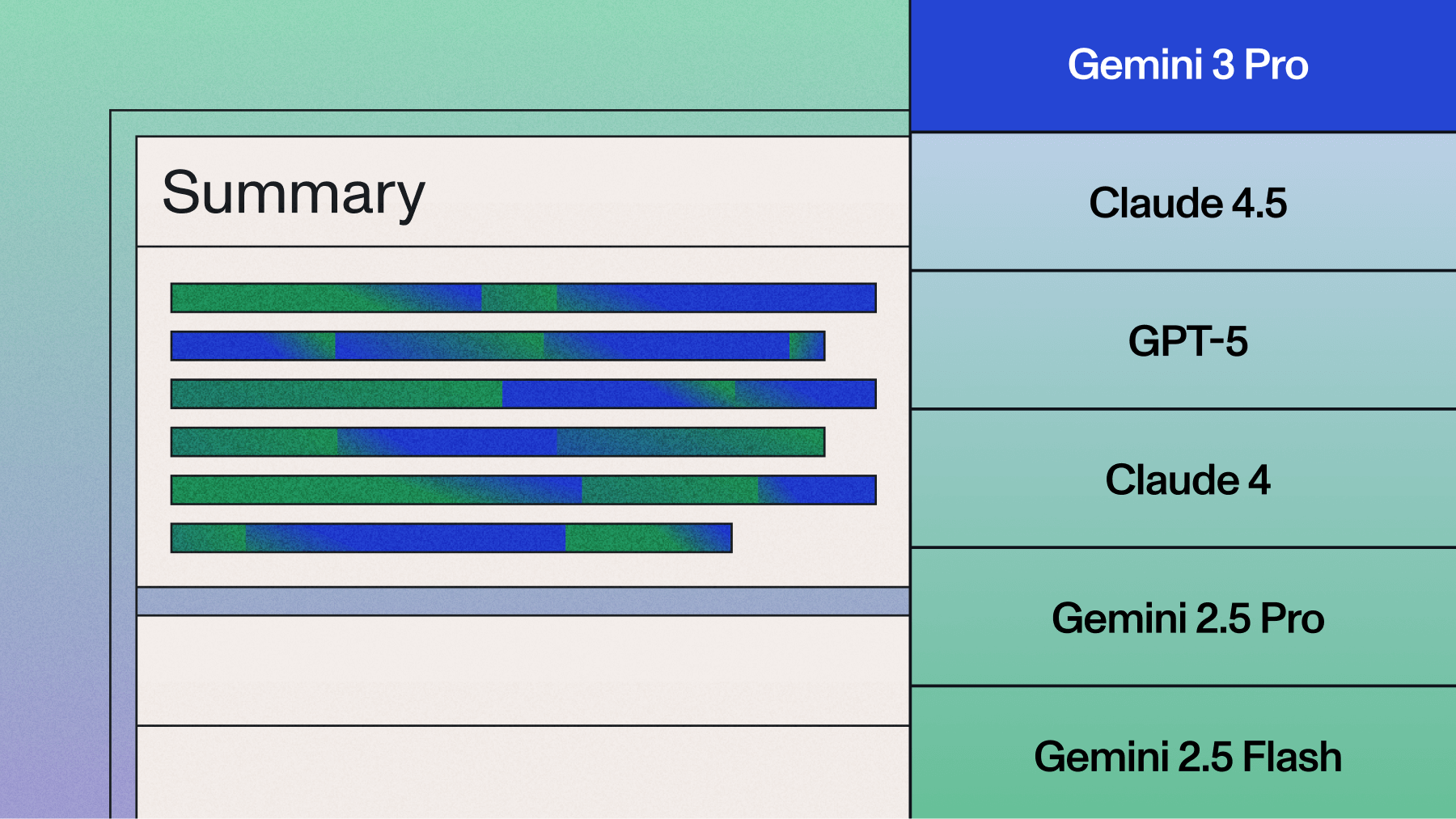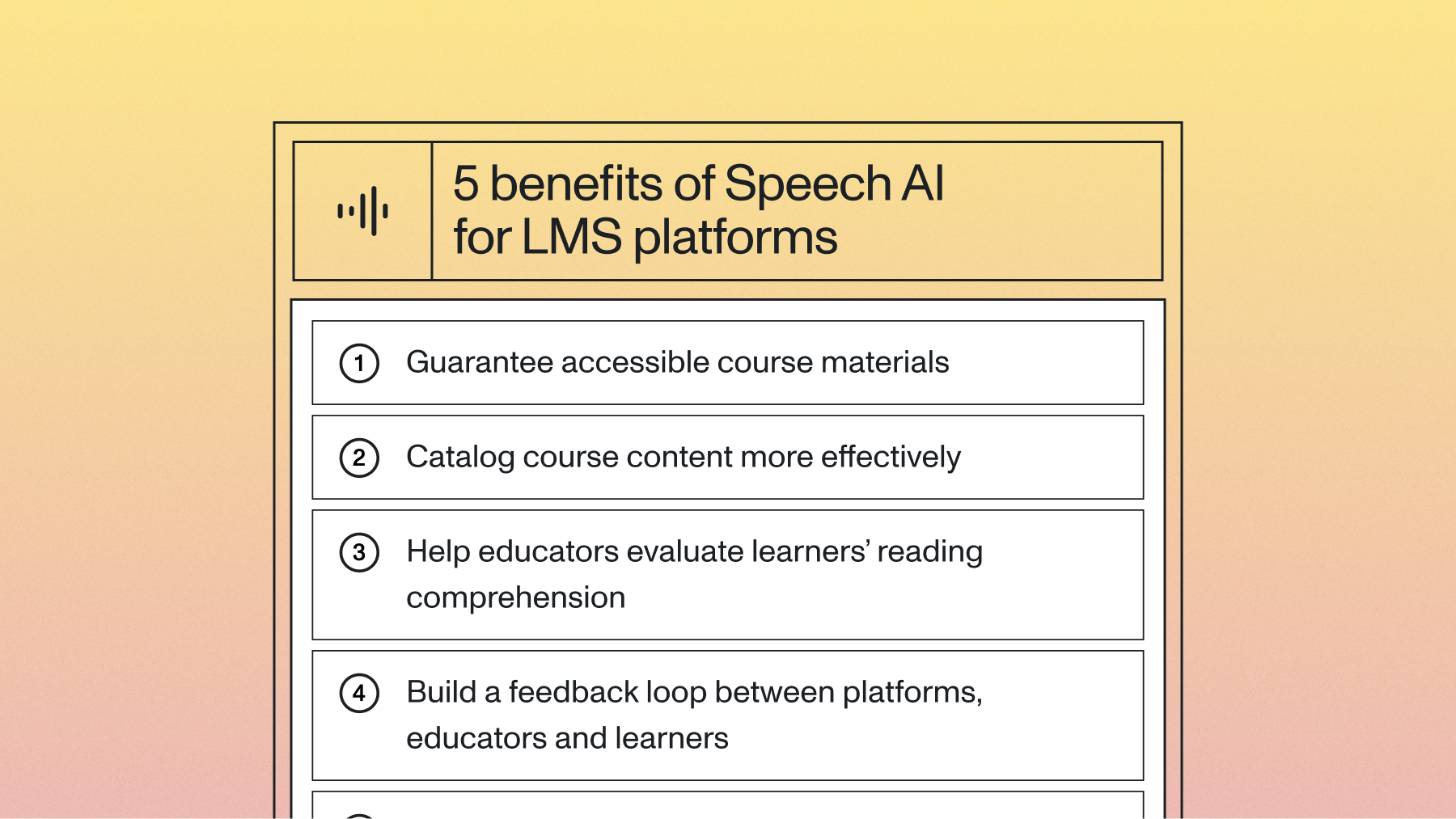Best Large Language Models (LLMs) & Frameworks in 2024
Gain the basic know-how you need to understand what a large language model (LLM) is, how it works, and the best models in 2024.



Few technological advancements have captured the imagination, curiosity, and application of experts and businesses quite like artificial intelligence (AI).
Among all the modern-day AI innovations, one breakthrough has the potential to make the most impact: large language models (LLMs). These feats of computational linguistics have redefined our understanding of machine-human interactions and paved the way for brand-new digital solutions and communications.
Large language models can be an intimidating topic to explore, especially if you don't have the right foundational understanding.
Below, we'll give you the basic know-how you need to understand LLMs, how they work, and the best large language models in 2024.
What Is a Large Language Model?
A large language model (often abbreviated as LLM) is a machine learning model designed to understand, generate, and interact with human language. Engineers train these models on vast amounts of text data. These models aren't just large in terms of size—they're also massive in their capacity to understand human prompts and generate original text.
Original natural language processing (NLP) models were limited in their understanding of language. They often relied on smaller datasets and more developer handholding, making them less intelligent and more like automation tools.
LLMs leverage deep learning architectures to process and understand the nuances and context of human language. LLMs also generate text. From chatbots that provide human-like interactions to tools that can draft articles or assist in creative writing, LLMs have expanded the horizons of what's possible with AI-driven language tasks.
Experiment with Large Language Models
Test LLM capabilities directly in the AssemblyAI Playground. Perfect for exploring AI models with no setup required.
What is an LLM framework?
An LLM framework refers to the architecture and software environment that supports the development, training, and deployment of large language models. These frameworks are designed to handle the complexities and computational requirements of training models that can contain billions of parameters and process vast amounts of data.
For example, LLM gateway changes the way developers can build applications on spoken data by offering a highly specialized LLM framework, enabling users to access a variety of LLM capabilities. LLM gateway is engineered to simplify and improve the analysis of audio data through a single API.
Benefits of Using an LLM
LLMs are quickly becoming essential to our day-to-day processes and systems. And here's why:
- Speed: LLMs can process vast amounts of text data rapidly, allowing you to analyze huge volumes of information in minutes rather than dozens of manual man-hours.
- Versatility: Businesses can leverage LLMs for everything from summarization to creative writing and code development.
- Adaptability: Unlike static models, LLMs can be fine-tuned, allowing them to adapt to changing linguistic trends,new information, and a wide range of tasks.
- Cost Efficiency: LLMs can automate tasks that previously required human intervention, leading to significant cost savings.
- User Experience: LLMs can engage users in more natural, human-like conversations. They can even adapt to individual user preferences and styles, offering personalized responses and solutions.
- Accessibility: Many LLMs have been trained on multiple languages, allowing them to bridge linguistic gaps.
LLMs also gain new abilities as they learn and grow—a process known as emergence. That means their use and application will continue to expand.
Challenges and Limitations of LLMs
While LLMs are becoming essential for modern-day applications and solutions, they're not perfect. Here’s what you can do to overcome some limitations:
- Pick LLMs and LLM frameworks that are safer. LLMs are trained on vast amounts of data from the internet, which means they can inherit biases they find. However, there is ongoing research to make LLMs safer, such as Reinforcement Learning from AI Feedback (RLAIF).
- Fact-check when you can. Even though LLMs are trained on so much data and can automatically deliver high-value insights from your transcripts, it’s important to fact check information—especially if the subject matter is particularly complex.
How Do Large Language Models Work?
LLMs are built upon deep learning, a subset of machine learning. They use neural networks that are inspired by the structure and function of the human brain.
The breakthrough for LLMs came with the introduction of the Transformer architecture. This structure allows models to handle long-range dependencies in text—meaning they can consider the context from earlier in a sentence or paragraph when making predictions.
LLMs are typically trained using self-supervised learning on massive datasets. They learn to accurately predict the next word in a sequence, and through learning on millions of such predictions, they refine their internal parameters.
The LLMs that engineers train today have billions of parameters. These parameters are adjusted during training to minimize the difference between the model's predictions and the actual outcomes.
Before processing, text is broken down into chunks, often called tokens. Tokens can be as short as one character or as long as one word. The LLM converts these tokens into vectors, which are numerical representations of words. The model then processes these vectors to generate your desired outputs.
In a nutshell, that's how large language models work. Of course, there's more happening under the hood, but this primer is a good starting point for understanding the basics. Want to dive deeper? Read Introduction to Large Language Models for Generative AI.
The Best Large Language Models and Frameworks in 2024
Startups and enterprises alike are pushing the boundaries of what's possible with large language models. They're rapidly turning out innovative products and features, and it's hard to keep up with the most revolutionary solutions.
While there's no one-size-fits-all LLM for every use case, a few models stand out from the crowd. Here are the top large language models and frameworks as of 2024.
1. LLM gateway
LLM gateway is a framework introduced by AssemblyAI. It is a framework for applying large language models to spoken data.
LLM gateway integrates with AssemblyAI's state-of-the-art speech recognition model, ensuring that the LLM outputs are based on quality transcriptions.
2. GPT-4
GPT-4 is OpenAI's latest (and largest) model. It's a Transformer-based model that’s larger than its 175B parameter predecessor,, and it's demonstrated human-level or near-human-level performance and accuracy on a range of benchmarks. As of now, it's available as a standalone product, and its API can be used for various applications. It currently powers Microsoft Bing Search and will soon be integrated into all Microsoft Office products.
3. Mixtral 8x22B
Mixtral 8x22B is a large language model that uses a hybrid transformer architecture and is pre-trained on an expansive dataset, including diverse internet text, scientific literature, and multilingual data. It’s able to handle complex, multi-threaded conversations and data streams, making it ideal for applications requiring deep contextual understanding and multitasking.
4. Gemini
Gemini is Google’s large language model that’s designed to be natively multimodal, seamlessly integrating capabilities across text, images, audio, video, and code. This next-generation AI model is capable of understanding and processing a wide range of data types, making it a powerful solution across different fields.
5. Llama 3
Meta Llama 3 is the latest iteration in Meta's powerful suite of large language models, offering advancements in AI capabilities through its 8B and 70B pretrained and instruction-tuned versions. This model integrates into Meta AI to provide better user interactions with everything from complex problem-solving to sophisticated coding tasks.
How to Choose the Right Large Language Model
With so many options on the market, finding the right LLM for your use case can be tricky. The best large language model will depend on your required tasks, required training, accuracy, available APIs, and budget.
Here are a few things to consider when choosing the best LLM:
- Primary Task: Determine the primary tasks you want the LLM to perform. This could range from text generation, summarization, and translation to question-answering.
- Model Size: LLMs can range from millions to billions of parameters. Larger models generally perform better but come with increased computational costs.
- Pre-Trained: While pre-trained models are good for general tasks, fine-tuned models are tailored for specific jobs or domains.
- Accuracy: Choose a model that has high accuracy and performance.
- Integrations: Find an LLM provider that offers easy-to-use APIs or SDKs for seamless integration into your systems.
- Scalability: Ensure the model can handle the volume of data you'll be processing, especially if you need real-time responses at scale.
- Cost: Understand the pricing model—it could be based on the number of tokens, API calls, or compute hours.
Explore Large Language Models in Action
Try out AssemblyAI’s AI models in the Playground. Perfect for experimenting with different LLMs before making a decision.
How Businesses Are Building LLM Applications with AssemblyAI
Jiminny
Jiminny, a leader in Conversation Intelligence, sales coaching, and call recording, has harnessed the power of AI to transform the way sales and customer success teams manage and analyze conversational data. They’ve integrated AssemblyAI's cutting-edge transcription and analytics tools into their platform to empower their customers to secure a remarkable 15% higher win rate on average.
Despite the vast majority of businesses recording their digital conversations, very few analyze this data to extract valuable insights. Jiminny fills this gap by using AssemblyAI’s state-of-the-art models to provide real-time transcription, speaker diarization, and advanced analytics directly from voice and video recordings. This technology allows Jiminny to offer features such as:
- Data-driven coaching tools
- Enhanced communication across teams
- Improved forecasting accuracy
All of which contribute to increased sales performance and customer satisfaction.
Marvin
Marvin, a user research platform, has dramatically transformed how its end users manage and analyze research data by integrating AssemblyAI’s advanced AI technologies. They’ve built tools to help users spend 60% less time on data analysis, allowing them to focus on deriving actionable insights and making informed decisions.
Marvin supports its users in handling large volumes of qualitative data efficiently and securely by automating the transcription of audio and video data and ensuring the security of sensitive information through automatic PII redaction.
Start Building LLM Apps on Voice Data
Ready to take action on your spoken data? LLM gateway can help you generate summaries, auto-transcribe, and answer questions about your phone calls, videos, podcasts, and meetings. Need a scalable solution?
Build Powerful LLM Apps on Voice Data
Start using AssemblyAI’s LLM capabilities to analyze and build applications on voice data with ease.
Lorem ipsum dolor sit amet, consectetur adipiscing elit, sed do eiusmod tempor incididunt ut labore et dolore magna aliqua. Ut enim ad minim veniam, quis nostrud exercitation ullamco laboris nisi ut aliquip ex ea commodo consequat. Duis aute irure dolor in reprehenderit in voluptate velit esse cillum dolore eu fugiat nulla pariatur.






%20influence%20automatic%20speaker%20labeling_.png)